Sarah Schneider & Audrey McGarrell - Sunsetting Energy Star in Roofing - PODCAST TRANSCRIPTION
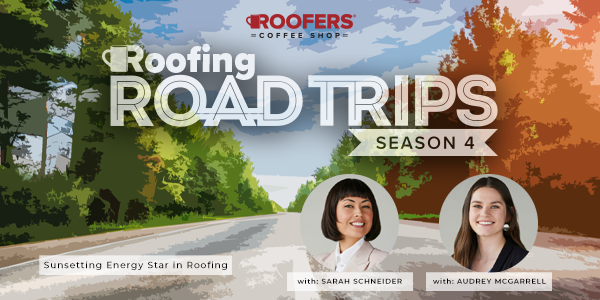
Editor's note: The following is the transcript of a live interview with Sarah Schneider and Audrey McGarrell of the Cool Roof Rating Council (CRRC) You can read the interview below or listen to the podcast.
Speaker 1:
Welcome to Roofing Road Trips with Heidi. Explore the roofing industry through the eyes of a long term professional within the trade. Listen for insights, interviews, and exciting news in the roofing industry today.
Heidi Ellsworth:
Hello and welcome to another Roofing Road Trips from Roofers Coffee Shop. My name is Heidi Ellsworth and we're a road tripping today to get some information about a program that everyone has heard of. I mean, I think everyone has heard of Energy Star, but there are some huge changes and so we wanted to talk to the experts around this and that is the Cool Roof Rating Council or the CRRC. So today we are with Sarah Schneider and Audrey McGarrell from CRRC. Welcome ladies to the show.
Sarah Schneider:
Thank you so much for having us Heidi.
Heidi Ellsworth:
I'm so happy to have both of you here. I mean, this is such great information, it's just going to be amazing. Before we get started, why don't you go ahead and let's start with introductions. So let's start first with you, Sarah. Can you introduce yourself and tell us a little bit about CRRC.
Sarah Schneider:
Yeah, definitely. So I'm Sarah Schneider, the Deputy Director of the CRRC. I've been with the organization since 2013, so I'll be celebrating my 10 years next year. So in my current role, I primarily oversee the development of our organization's policies and standards. I maintain our many accreditations and I also oversee our outreach and education activities. I've got a background in energy efficiency, sustainability, environmental policy and environmental justice. So I bring that with me to this role because the CRRC, it's not just a roofing only organization. We serve a lot of different sectors. So having that diverse background has really helped me to flourish in this role with this organization.
Heidi Ellsworth:
Wow. I love it. I love that background sustainability, man, it is right now what everybody's focused on. So Audrey, please introduce yourself and tell us a little bit more.
Audrey McGarrell:
Yeah, well thanks Heidi. Thanks so much for having us. We're so excited to be here today. I am Audrey McGarrell and I am the project manager of the CRRC. In this role, a couple of my primary duties are to manage our technical committee who makes recommendations to our board about all things related to our rating program, technical research, all of the science behind what we do here at the CRRC. I also manage our wall product rating program, which is actually a brand new program that was launched this year for rating the radiative properties of exterior wall materials. So I know we're talking about roofs today, but just of course, making a plug for the wall program as well.
In addition to those two things, I also manage our social media accounts, and I also support Sarah in some of our education and outreach efforts. I've been with the CRRC for about a year and a half, and prior to joining the CRRC, I had a background in building product certification and facility inspections. So I used to manage a couple of certification programs for an inspection agency.
Heidi Ellsworth:
Both of you ladies. Very impressive. I'm really excited about this. And I have to say, the building envelope, we're getting that out there on Roofers Coffee Shop. Yeah, I mean, we have your wall program out there, Audrey, and we're really excited to promote because all of the contractors out there are expanding and they're doing basically whether it's residential, commercial, it's building envelope, and how do you make the most sustainability and wall reflection is huge. Well, let's start with just sharing information about the CRRC. So maybe Sarah, can you some history what it does get everybody up to speed?
Sarah Schneider:
Yeah, of course. So we are a 501(c)(3) nonprofit organization. So we are mainly known for our expertise in the evaluation and labeling of what we call radiative performance or radiative properties of roofing materials. And as Audrey just mentioned very recently now in the radiative performance of exterior wall products. So we're talking specifically about solar reflectance and thermal emittance and how the building envelope can help reduce solar heat gain into the building and help on a larger scale reduce the albido of a community or a city, which has huge implications for public health and safety.
So we were established back in 1998 through a collaboration of diverse stakeholders, which makes us quite a unique organization. So in the formation of our organization back in the nineties, we had government agencies at the table. We had energy utilities, environmental advocacy organizations, the National Testing Laboratories, weathering farms, and very, very importantly, tons of people in the roofing industry. So manufacturers, suppliers, distributors, as well as contractors at the table to help form this very unique non-profit organization.
So as a 501(c)(3), we are obligated to provide a public service, and we do that primarily in three ways, which are all pillars of our organization's mission. The first is through product ratings, which Audrey had touched upon briefly a moment ago. We also do this through technical research. We partner with national laboratories, with manufacturers, with trade associations and other entities to do technical based research that helps inform the test methods, the rating methods, and just the information that we put out there to the public in terms of the impacts of cool roofs and cool exterior walls.
And then finally, a big, big part of being a 501(c)(3) is educating the public. So this is something that Audrey and I are really, really excited about, and that is to help raise awareness of all the stakeholders involved in the general public at large about the impacts of cool roofs and cool walls, not just in terms of increasing building energy efficiency, but also in mitigating what we call the impacts of the urban heat island. So this has huge implications, as I mentioned earlier, for public health and safety because our cities are getting hotter. Our communities are suffering from the impacts of extreme heat, and we're seeing it more so in northern cities. These were places where historically, there is no culture of living and behaving appropriately in heat as well as a lack of infrastructure.
So the CRRC, we're based in Portland, Oregon. Most of our homes don't have air conditioning. A lot of our homes are super old. We don't have great insulation in our roofs or our walls. And we have neighborhoods and communities that are seeing death during these extreme heat events. I mean, last year it was all over the news. The Pacific Northwest was hit hard with triple digit, multi-day long heat waves, people died. So it's important to emphasize that cool roofs and cool walls are just a couple of solutions in a whole portfolio of solutions to help deal with heat and also help to you reduce energy use in a building.
Heidi Ellsworth:
Yeah. That's so important. All of that is amazing for the communities at large, not just the roofing industry.
Sarah Schneider:
Yeah. And I think it's also important to be talking about these and really important issues to your customers, because it really is something tangible, especially during the summer when you're doing all these roofing projects. It is hot on the roof. It's hot on the sidewalk, everybody can relate to it. I think though for the CRRC, most people know it's because of our rating programs. And we have online directories that we provide for free that list all of these products with the radiative properties and that data, those ratings are used in the development, compliance and enforcement of various policies and programs that either promote or require the installation of cool roof and or cool exterior wall materials.
The CRRCs is also standards developer organization, were accredited by the American National Standards Institute and we maintain one American National Standard that's widely referenced in building energy codes, standards and programs here in the US. We're also an accredited product certification body. And the reason why we became that back in 2011 was that we were approved by the US EPA to be a certification body for the Energy Star Roofing program, which is the topic of today's podcast interview. Yeah.
Heidi Ellsworth:
Wow. I mean, that's impressive. That's really impressive. And the fact that I just think about, I don't know if people starting in 1998, I don't know if everyone really got how important this was going to be when we're here and now with everything that's happened. So let's talk about that. Let's talk about why did the EPA sunset the Energy Star Roofing program? And I'm really interested to hear why?
Sarah Schneider:
Yeah. So I think before explaining why it's important to set a little bit of historical context, why did they even have the program in the first place? So Energy Star is a voluntary certification program that was co-created and implemented by the US Environmental Protection Agency and the US Department of Energy. So in 1999 is when the Energy Star Roofing program was launched by EPA DOE. And as I said, it's a voluntary labeling certification program that's intended to help consumers understand what would be considered a "cool roof or an energy efficient roof." Energy Star has energy in it. So the focus was specifically on the ability of these building materials, roofing in particular as a measure for reducing building energy use, increasing building energy efficiency.
So the EPA, after 20 years of running the Energy Star Roofing program decided it was time to sunset the program. EPA uses three different criteria to evaluate whether or not a program should be updated. So the specification that is basically lays out all the requirements in order to become a certified roofing product or if it's time to retire the program. So two of those three criteria the EPA decided did apply here with respect to roofing products. They did a little bit of stakeholder outreach talking to various players and actors, both in the residential and the commercial markets. And in 2019, so 20 years after the launch of the Energy Star Roofing program, they officially announced that they were going to end the program, which officially sunset it in June of this year. They gave the industry three years to prepare for the end of that program.
So they had a few reasons for why they felt it was time to end this program. On the commercial side of things they found that several building codes, the requirements for cool roofs actually exceeded what Energy Star was requiring. And that actually was a good thing because that's what Energy Star's intended to do. It's intended to spur the market towards the adoption or wider adoption of energy efficiency building measures or appliance standards. So they achieved that goal check after 20 years.
On the residential side was a bit different. It's pretty well known that the uptick in the adoption of cool roofing for civil family homes or residential dwellings, it's been a lot slower than it has for commercial buildings and there's various reasons for that. But in their stakeholder conversations, EPA deemed that cool roofs were not appropriate in certain climates in terms of garnering energy savings. But more importantly, in their stakeholder conversations learned that the Energy Star label for residential roofing products wasn't informative enough to consumers who were really trying to find cost effective roofing materials.
So the fact that the Energy Star label basically says yes or no in terms of meeting a performance standard, it just didn't reveal enough information to home and building owners who wanted to know, okay, is this going to make sense from a cost standpoint in reducing building energy use? So with those main reasons, they did announce publicly that they were going to end the program. One thing that the EPA did not factor into their consideration is the ability of cool roofing materials to help mitigate urban heat islands.
And EPA actually has a separate program entirely that is 100% focused on informing the public about all these various solutions to help cool our communities. And that's the EPA Heat Island Reduction Program. They have identified five or six different, what we call interventions or measures to help cooler communities. Cool Roofs is definitely one of those. So EPA is still informing the public and helping the public understand the benefits of cool roofs. They're just not doing it through the Energy Star Program anymore.
Heidi Ellsworth:
That's good. Well, I think that's really interesting. So they are doing it over here and they see, obviously, we all know how important it is. So what does the sunset of the Energy Star Roofing program mean for the roofing industry? And does it affect more commercial, residential? How does that make a difference?
Sarah Schneider:
Yeah, so the sunset is new. The program eventually closed its doors on June 1st. Stakeholders in the public at large for the most part are not aware of this. So this definitely has implications for complying with building codes that still reference the Energy Star Roofing program. So those code bodies, standard developers, just policy makers in general are still trying to catch up to the fact that program doesn't exist. What does it mean for consumers? What does it mean for contractors? What does it mean for building owners that are trying to find products that are going to be eligible to comply with a building measure that says you need to install Energy Star certified roofing products? This mainly affects the commercial building industry more so because that's where we see the lines share of cool roof requirements for commercial low slopes buildings.
The residential sector, there aren't really that many codes in place. California is an exception but rebates on the other hand are tailored for largely towards home and building owners. So rebates really do, or other types of financial incentives really help cover part of the higher cost associated with cool residential roofing materials. So for instance, reflective asphalt shingles or cool metal products that use infrared reflective pigments. These do have a higher cost premium. So those financial incentives that, and they still exist, that help to cover part of that higher cost for homeowners and building owners.
The fact that the Energy Star program is no longer in existence for roofing products, which importantly means that manufacturers are not allowed to market their roofing materials as Energy Star's certified anymore. And also really importantly, Energy Star's not maintaining a qualified products list of certified roofing materials now that the Energy Star program for roofing products has ended. So you can imagine trying to qualify for our financial incentive like a rebate, and then that you can only get that rebate if it's an Energy Star certified roofing product. What's the public supposed to do? So that's really mainly how the commercial and residential roofing markets are being affected by the sunset of the Energy Star Roofing program.
Heidi Ellsworth:
So this is perfect because it just leads to that next question, what can they do? I mean, because roofing contractors are also going to be out there talking to their customers and to, whether it's commercial or residential and saying, "Hey, you can get a tax credit here, you can get a rebate here. You can do whatever it may be." So Audrey, how is CRRC filling that gap that was left by Energy Star? What are you doing to help all these contractors and homeowners and building owners?
Audrey McGarrell:
Yeah. So the number one, the most important resource that we are providing to contractors, to homeowners, to policymakers is our free online rated roof products directory. We have been rating roofing products for around 20 years. So this directory is not new, but with the sunset of the Energy Star program, it's becoming more prominent and it is the only publicly available database for the Radiative Properties of Roofing materials. An important distinction to make between a CRRC rating and an Energy Star certification is that it's in the name Energy Star certified products. Products had to meet a certain specified threshold in order to obtain that certification.
By contrast, the CRRCs rating program, we allow any type of roofing product to participate. We publish data, whether it's high or low, whether some jurisdictions would consider it cool or not. We are really basically a data clearinghouse where people can obtain their ratings from a credible testing laboratory. We publish that on our free online resource and then it's up to each individual jurisdiction to define what they consider a cool roof. And then people can refer to our directory to find products that fit that mold.
Beyond people looking at it from a compliance standpoint, policy makers can also look at our directory and see what is a realistic threshold that we can set. And our program is referenced in various building codes, programs and standards. People can look at the data to comply with voluntary building programs such as the LEAD program, the Green Globes program. And part of what makes our database a reliable source for people to obtain this data is that our rating program is operated in accordance with strict requirements that were developed by a diverse set of industry stakeholders and subject matter experts. I know Sarah touched on that a little bit earlier.
And our requirements for our program are, it's a living document. They're constantly changing... I don't want to say they're constantly changing but they're being updated when newer better information is available to us. And that process is governed by our board of directors with support from our technical committee, which is a balanced group of industry and general interest members, meaning that experts in different types of roofing products as well as experts in the science and the measurement of radiative properties, they are all at the table when any decisions are being made related to our rating program.
To expand on that a little bit more, the testing for our ratings is performed by CRRC approved test labs that are also accredited to ISO standards and fully independent for many grouping product manufacturers. That really is the core of what gives our data accuracy, credibility, and we can really stand behind that data that we're publishing. Also, due to the fact that all of the measurements are taken in accordance with industry vetted test methods, a lot of a CM test methods are used for our program as well as our ANSI/CRRC S100 standard, which is an American National Standard that is maintained by the CRRC as a standards development body.
And just also to draw similarities between our program and Energy Star, a lot of those same test methods are used for both programs and the Energy Star program actually required or utilized test methods that were developed by the CRRC, referenced portions of our rating program. So really in terms of the data that you're looking at, it's very, very similar and equally credible.
Heidi Ellsworth:
And I want to just make sure I have this, so going back to what we were talking about, if contractors are looking to get verification on the reflectivity of products, if they need that for their customers for possibly rebates or whatever, they can come to the CRRC website, go into the directory, and they can see everything tested and how it qualifies?
Audrey McGarrell:
Yes. They can visit our directory, see the measured solar reflectance as well as something called the Solar Reflectance Index or SRI. That is a calculated value that takes solar reflectance and thermal emittance into account and spits out one number that gives you a good reference point for how cool or how that product will perform. Some people are more focused on SRI, others are more focused on those actual measured properties. But either way, they can visit our directory and find the information they need.
Sarah Schneider:
And just to piggyback off that, the CRRC also has a label that manufacturers that participate in the program use on either the product packaging. So that's another way contractors getting materials from distributors can see, "Well, it's right there on the package." However, the most current data are always on the directory, which went through a huge redesign and rebuild last year. So it's a lot more streamlined, more user-friendly and it's also available on mobile devices. So it's mobile friendly, which is really, really useful for contractors, but also inspectors in the field that are checking compliance on site. So we did get feedback from those user groups when redesigning the directory. Because we're out there to provide useful job aids and information to all of these various stakeholder groups, particularly contractors.
So the other thing too is, I mentioned it briefly a few minutes ago, but the CRRC is widely referenced in building codes and programs. And we have been in communication with US EPA as they were getting ready to officially sunset the program about what to do, how do we help all these jurisdictions, these programs, these utilities and others that are requiring Energy Star certified roofing products, how do we get the information to them so that it will be a streamlined process for them to be able to continue enforcing and helping boost compliance with their various programs and policies. So EPA is putting in its communications directing the public to the CRRC. So we have been working with them to ensure that there isn't a major disruption to the industry because of the Energy Star Roofing program going away.
Heidi Ellsworth:
That's good. So they're referencing you so that people know where to go and we're trying to-
Sarah Schneider:
It's slow going but codes and programs that are catching wind of the sunset of the Energy Star program are in the process or have already updated their codes and standards to replace references to Energy Star with references to the CRRC.
Heidi Ellsworth:
That's excellent. Wow. That's good. I just have to follow up on that because I love the fact, like you said right at the beginning, CRRC board and membership is made up of a lot of roofing across the roofing industry. So there's strong representation, which I think is so important.
Sarah Schneider:
Yes, definitely. I mean, that's true collaboration. That's exactly the roots of our organization and continues to govern what we do. And that's really how you get buy-in. And that's also how you produce sensible and meaningful programs and test methods and standard protocols is getting that perspective from the wide array of people that are affected by it.
Heidi Ellsworth:
You do it every day. Well, okay. So going back to that Audrey too, when I think about all the different roofing professionals. So we have roofing consultants and contractors and manufacturers and distributors, and they're all looking for information they can trust on cool roofs. So maybe talk a little bit about, I know we've already talked about the directory, but just that overall trust in that what they're getting from the directories is really going to help them when they have to submit to building owners or to homeowners or all of their end users too. Because there's a lot of environmental product data sheets, there's a lot of stuff that's going on out there right now that contractors and industry professionals are having to gather information for.
Audrey McGarrell:
So I think one of the things that sets a CRRC rating apart from say an EPD produced by a manufacturer is that we are a third party. We're an independent body with no interest financially or otherwise in the organization's getting ratings in the organization's performing testing. So when you use CRRC label or you look at our directory, we're providing the assurance as a third party entity that the data we're publishing is correct and is credible. So I think that's one way to say, well, how is our data credible? And I already mentioned it before but the fact that the laboratories that provide the data are accredited, they're independent, they participate in trainings and studies put on by the CRRC. They go even above and beyond what is required of them for their accreditation or for their own quality system.
So that's really important for us to have that open communication with our laboratories. They represent very strongly on our technical committee, representatives of laboratories sit on our board. So having the perspective of the people actually doing the testing and telling us how can we make the program even better? How can we just make sure that it's the best that it can be? And you mentioned where can contractors and other roofing professionals find information about full roofs? And maybe that's beyond just finding data on our directory.
One of the pillars of our mission, Sarah touched on this before as well, is education and providing a public service. One of the ways that we do that is by maintaining a lot of resources on our website on full roofs.org. In addition to our product rating database, we do have two databases related to codes and financial incentives and that sort of thing. We maintain a list of codes, programs, standards that contain full roof as well as full exterior wall provisions.
We also have a database of financial incentives, so rebates and that sort of thing by state, by city. So that's a really helpful tool if someone wants to visit our website and say, "How can I qualify for a rebate? Is there even one available where I'm living or where I'm working?" In addition to that, we also have resources specific to contractors on our site. That is really tailored towards, first of all, helping a roofing contractor have a basic understanding of whole roofs, why they're important, why people might be asking for them. And in turn, how they can then convey that information to customers that they're working with and have an informed conversation about the benefits of cool roofing and why it might matter.
So that's the short answer of what's available on our website. Of course, there is a lot more and it's constantly being updated. So it's definitely the number one resource. If you want to learn more about cool roofs or all of the benefits beyond energy efficiency or even beyond UHI mitigation, just trying to get a holistic picture.
Heidi Ellsworth:
I love it. And we are so proud to have you as our newest partners on Roofers Coffee Shop. There's a full directory for CRRC on the Coffee Shop where you can find links to get to all this information. So we always try to make it as simple as possible. So if everybody out there, if you're thinking, "Wow. I can go look up rebates for my state, that's great." We're going to put the where to go. Again, in fact, Audrey, why don't you say again, what's your website?
Audrey McGarrell:
Coolroofs.org.
Heidi Ellsworth:
That's easy to remember, coolroofs.org. But if for some reason you're driving and you're thinking, "I'm never going to remember that." All you have to do is go to Roofers Coffee Shop and go to the CRRC directory and you'll find all of this. And what I'm really excited about too with this is all of what you were talking about, Audrey, all the research, all the articles, everything that you've done, we're really excited to share that through Roofers Coffee Shop to help get that word out there. So this is just going to great to be involved with you. And I guess my big question here at the end is if some of our listeners out there are thinking I want to be more involved, how can they get more involved with CRRC?
Audrey McGarrell:
Yeah. So we have danced around this throughout the podcast, but the easiest way is to become a member of the CRRC. We are a member based organization. So everybody that sits on our board, everybody that serves on our committees is a member of the organization. And within that we offer two different categories of membership. The first is class A, which is industry. So anybody who makes sells, distributes roofing or exterior wall materials would fall into that category. The second category is class B, which is our general interest members. This covers a very wide range of anyone who has an interest in being involved with the CRRC.
Importantly, we have a lot of roofing contractor members in our Class B category as well as different associations in the roofing space. A few examples that listeners are probably familiar with the NRCA, IIBEC and of course Roofers Coffee Shop are all members. And we really do value having roofing contractors and other members of the roofing profession involved because we want their input, we want their expertise at the table, whether it's in a formal capacity serving on one of our committees or even just attending a couple of our meetings or being involved and contacting us. If something comes to mind and they say, "Hey, I really think this is something that should be on the CRRCs radar."
So that being said, whether or not someone is actually a member of the CRRC, they are welcome to attend our committee meetings. They're all offered virtually. Sometimes there's an in-person part as well, but they're always at a minimum available virtually, and they are free and open to the public. So if someone is interested in learning more but they're not quite ready to become a licensee and rate products or they're not quite ready to apply to be a member, they're welcome to attend those meetings and hear the discussions that go on, understand how our process works.
And I also want to jump back because I skipped over this, but one of the major benefits of being a CRRC member is attending our annual general membership meeting. So that is an annual meeting that is typically in June and it's typically in Las Vegas in person. And that is a great opportunity for all of our members to get together in one place, to network, to learn to hear what's new with the CRRC, to get some face time with staff and with our board. As I mentioned, our membership is so diverse, so it's really a good opportunity for a roofing contractor or a manufacturer to meet some people in these different spaces or that are involved in the organization in different ways. We also have great guest speakers at those meetings. It's really a chance to learn a lot about roofing installations, the science behind the program, new technologies, that sort of thing.
Heidi Ellsworth:
Well, we're going to want to have Roofers Coffee Shop there because we love this stuff and that membership meetings and the speakers and just like-minded. Where are we going? It's the building envelope now. It's not just roofs. Everything that you're doing is so important. I always just have to throw this in for roofing companies out there. What a great thing to be able to say, "I'm a member of CRRC. I care. I care about the environment, I care about sustainability and I care about the products that we are offering to our customers." So there's so much that can wind in. I always say there's a lot that with associations, you got to think about your marketing program and how are you being proud of being a part of these groups.
Sarah Schneider:
Yeah. With that said, the CRRC class B membership, so the membership category for contractors and others that are not producing or selling roofing materials, we do have a member logo, which they definitely, our members take advantage of. You see it on their website, on their marketing materials. So it's a stamp of credibility, like yes. And then also speaks to your beliefs and your stance on like, "Okay. This is something that's benefiting communities here. This is something that's beyond just, we're saving some money on our utility bill." The other thing is membership is probably one of the lowest membership dues I've seen out there. It's $60 a year, and if you serve on our education committee, which Audrey and I co-run, your membership views are waived.
Heidi Ellsworth:
That's awesome. I love it.
Sarah Schneider:
Most of our educational materials are targeted to the stakeholders in that class B category. So that's the general interest. Everybody outside of those that manufacture or sell roofing materials. So those perspectives are incredibly important to have on our committee, which informs and creates these educational materials. So that's an incentive to get those perspectives on the committee.
Heidi Ellsworth:
Yeah, this is only going to grow. That's all we're seeing and it's so important. All right. We just had another webinar, it was just last week and they were talking about the importance of the roof and the building exterior in going forward with our world, with our environment and how we're going to be fighting carbon. So I have to say, ladies, thank you for all you're doing. Wow, this has been so informative and really impressive.
Sarah Schneider:
Thank you so much.
Audrey McGarrell:
If I can, I do just want to jump in and say one other way to stay in touch with us and to keep track of what we're doing is a follow up on social media. On Twitter we are @Official_CRRC and on LinkedIn we are Cool Roof Rating Council. You can just find us by searching our name.
Heidi Ellsworth:
Excellent. And again, those social media links are in the directory on Roofer Coffee Shop too. And we're doing a lot of social media. We're getting stuff out together, working through it. So there's going to be great information coming out of this. So again, I'm going to say, Sarah, thank you.
Sarah Schneider:
Thank you so much, Heidi and Roofers Coffee Shop. This has been a really great opportunity. It's been fun though. Thank you.
Heidi Ellsworth:
Thank you. We try to make it fun. And Audrey, thank you so much for all that great information.
Audrey McGarrell:
Yeah. Thanks so much. It's really been a pleasure. It's very exciting to be here.
Heidi Ellsworth:
I love it. I love this kind of stuff and I want to say thank you to all of our listeners out there. This is the kind of things that can change your business. And I say that every time, but it is so true. So please follow up. Go to the directory CRRC on Roofers Coffee Shop, and check out what's going on. Check out the directories. Such great information for you and your customers. Also, please be sure to listen to all of our podcasts. So visit the relisten watch navigation on rooferscoffeeshop.com, and check out all the podcasts. Be sure to subscribe and get notifications on your favorite channel. And we will be seeing you next time on Roofing Road Trips.
Speaker 1:
Make sure to subscribe to our channel and leave a review. Thanks for listening. This has been Roofing Road Trips with Heidi from the rooferscoffeeshop.com.


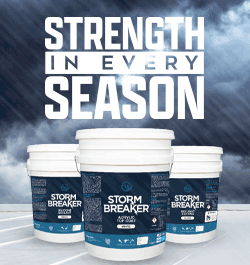










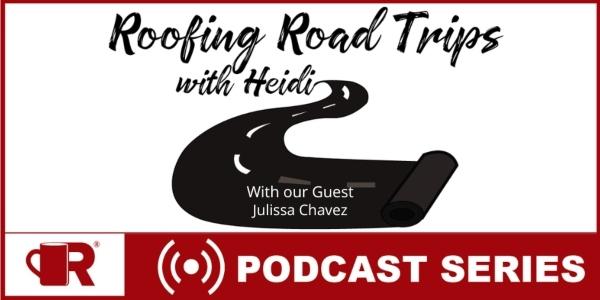
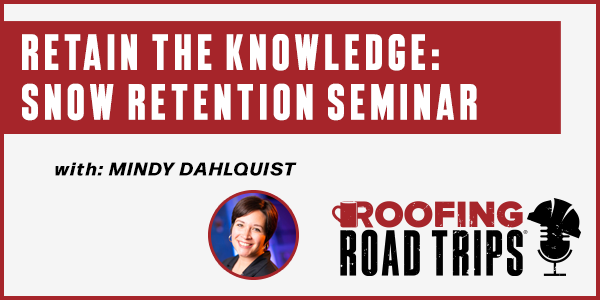
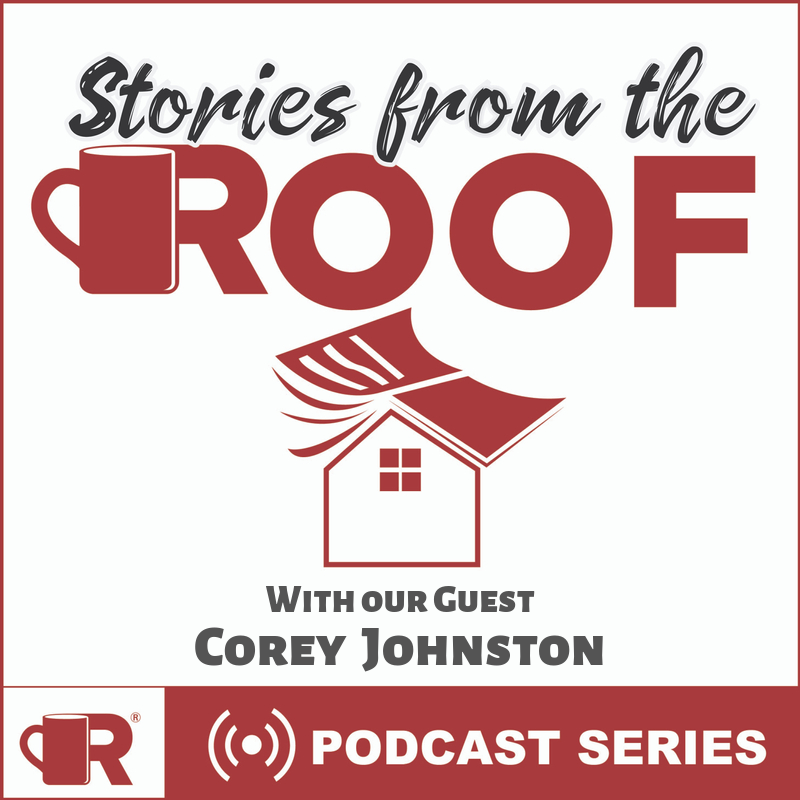

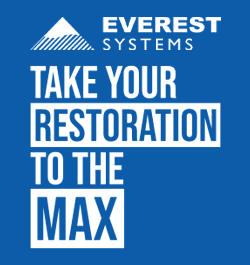

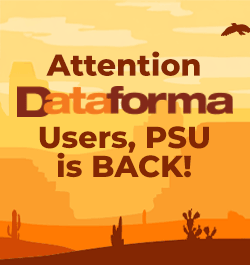

Comments
Leave a Reply
Have an account? Login to leave a comment!
Sign In